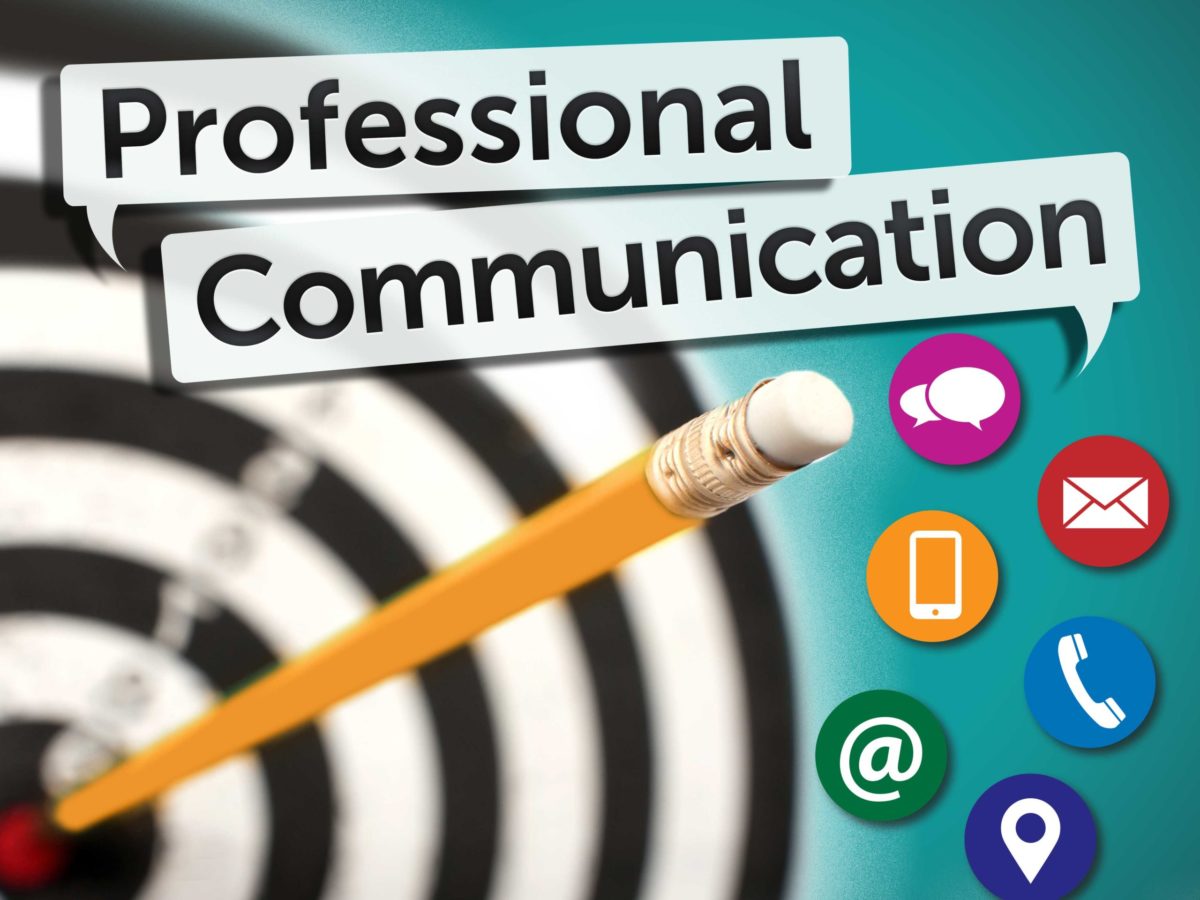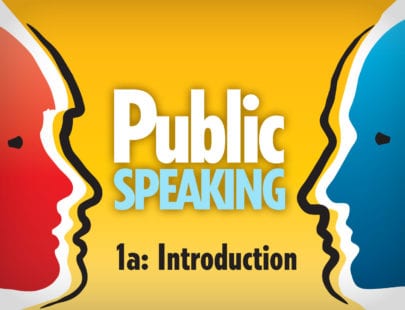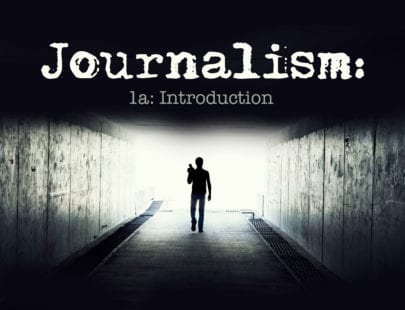
Professional Communication
In today’s global economy, professional communication is no longer limited to the basics of reading, writing, speaking, and listening. In this course, you will focus on communication in many forms- written, oral, graphic, and technological- in the workplace to enhance career options while learning how to address conflict and communicate with cultural competency. By the end of this course, you’ll have the basics you need to be a standout communicator in a professional setting.
Units at a Glance
Unit 1: How We Communicate
Communication is a lot like breathing: it’s something we all do, continually, often without thinking about it. And like breathing, the act of communicating is vital for quality of life. In a professional setting, your ability to communicate thoughtfully will enable you to land the jobs you want, earn promotions, build positive relationships, and express yourself creatively. By the same token, just as it’s possible to compromise your health by breathing too shallowly, not paying proper attention to the way you communicate can limit your opportunities. Get ready to take a deep dive into how communication works so you can communicate intentionally and effectively with coworkers, managers, and customers or clients.
What will you learn in this unit?
- Describe elements of the communication process
- Identify the roles of communication in a professional environment
- Explain strategies appropriate to different kinds of communication
- Determine how to listen effectively and respond to feedback
Unit 2: Emotions and Conflict in Communication
Wherever humans are working or playing, conflict is bound to break out. That doesn’t necessarily mean a fist fight—it simply means there will be inevitable differences in perspective and opinion. And when those differences occur, emotions tend to run high. Recognizing how emotions affect communication—and learning how to manage emotions—is key to successfully navigating conflict. This need for emotional awareness applies whether communication happens through a face-to-face conversation or through some other medium, such as a video call or a print document.
What will you learn in this unit?
- Describe factors affecting human perception
- Identify positive ways to recognize and manage conflict
- Relate the four aspects of emotional intelligence to communication
- Recognize and resolve conflict that shows up in digitally mediated communication
Unit 3: Communicating with Cultural Competency
One of the most interesting aspects of entering the professional realm is the opportunity to meet and work with diverse people. It’s also one of the most challenging parts of working life. People from different cultural backgrounds don’t just eat different foods and celebrate different holidays—they approach communication with different perspectives. To communicate effectively in a professional environment, you must be able to recognize and adapt to those perspectives. People who do that well have cultural competency, a skill that makes them desirable as colleagues and employees.
What will you learn in this unit?
- Define cultural competency
- Recognize the role of cultural biases in communication
- Adapt communications to diverse audiences
- Use culturally sensitive language
Unit 4: Professional Communication in the Workplace
Communication is an everyday activity. Many of us communicate with other people, either in person or via technology, from the moment we get up in the morning until we fall asleep at night. But the way communication happens changes depending on the situation. That’s especially true when we’re talking about communication occurring in the workplace. The context of a professional work environment shapes the who, what, when, where, and how of communication in distinct ways, requiring specific knowledge and skills.
What will you learn in this unit?
- Identify different types of communication that happen in the workplace
- Communicate effectively as a job candidate
- Identify the different communication skills required in professional contexts
- Assess and develop your communication strengths
Unit 5: Using Language to Communicate Effectively
Language is much more than a tool we use to encode thoughts. Language enables us to create thoughts, to make sense of our feelings, and to express what we think and feel in ways that connect with others. In a professional environment, choosing your language carefully enables you to tailor communication to your audience and express ideas precisely. Because clarity is so vital to professional communication, one of the key skills you’ll need is the ability to edit written, oral, and visual messages so they meet the standards expected in your environment.
What will you learn in this unit?
- Convey a clear key message
- Tailor the form, structure, and language of communication to a specific audience
- Create compelling copy for marketing materials
- Edit and proofread communication for correct usage, grammar, and punctuation
Unit 6: Using Technology to Communicate
At the end of the nineteenth century, the telegraph and typewriter dramatically sped up the pace of professional communication. The twentieth century then introduced the telephone, fax machine, and personal computer, making it possible for communication that once took days to happen instantaneously. Today, new communication technologies, such as direct messaging and web conferencing, make even email seem rather slow and old-fashioned. As you enter the professional realm, your proficiency with technology will largely determine your ability to communicate efficiently and effectively.
What will you learn in this unit?
- Use technology to access information
- Recognize a wide range of technology applications used in professional contexts
- Improve your communication productivity
- Describe how to behave ethically when engaging in technology-enabled communication
Unit 7: Navigating Group Communications
How do you feel about group projects? If you’ve had any experience with them, then you know how difficult it can be to get everyone in a group working toward the same goal, with the same level of commitment. In the workplace, this challenge is magnified because most tasks involve some degree of collaboration. The key to successfully navigating group communication is to understand the personality characteristics, communication styles, and roles that can interfere with productive discussion. It also helps to follow best practices for participating in meetings, which apply whether those take place in person or virtually.
What will you learn in this unit?
- Describe how groups function in a professional setting
- Identify roles and etiquette within a business hierarchy
- Examine strategies for solving common group communication problems
- Participate effectively in a professional meeting
Unit 8: Communicating Through Presentations
Professional presentations bring together various kinds of communication. They require strong skills in written communication, interpersonal communication, and visual communication. Because many presentations involve teamwork, group communication skills also often come into play. The foundation for presentation success is to know your audience so you don’t talk at them but rather connect with them in ways that engage them and achieve your purpose.
What will you learn in this unit?
- Conduct research into the audience and topic for a presentation
- Create a logical structure for a presentation
- Apply visual design standards to a presentation
- Deliver engaging, effective presentations to a live audience
Required Materials
Physical
- Video recording device
- Published material: magazine, newspaper, textbook, website, etc.
Software
- Word processing software
- Presentation software
Optional
- Poster board
- Art supplies
- Graphic design software
- Digital camera
- Audio recording device
- Paper/pencils




